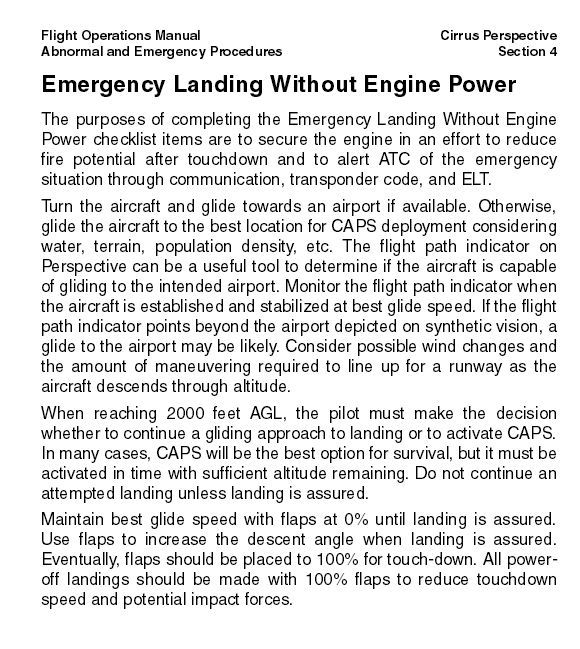Looks like the undercarriage did it’s job of absorbing much of the impact… The engineering/survivability side of my brain can appreciate how this all works…but the pilot side of my brain is always full of questions when I see something like this.
Without reading anything about it (hey, I’m on my first cup of coffee) I want to assume it was some sort of spin recovery? Otherwise, even with no power it just seems more natural to just try to land it in a field or quiet road or maybe an airfield. Pulling that chute just feels like something to be done if bits are falling off or things have already hit the fan? (I speak from complete ignorance on this subject, as is my internet right ;))
That was my thought process as well. Anybody who does that pilot stuff have any more insight into the actual process?
I haven’t really dived in the AMM/PFM for the SR-22, but from what I’ve heard from pilots and others in the (supposed) know is that the deployment of the parachute is pretty standard in case of engine failure. The airframe is a techincal write-off but can be repaired, 14 airframes have been put back into service after parachute deployment.
The parachute has a 100% survival rate(currently) if deployed above a certain altitude. I think this speaks for the value of the feature. There is no guarantee those people would have survived an engine out landing, or walk away with major injuries. The Sr-22 is not certified for spin recovery(rumour IMHO, havent looked into that), and thus the parachute becomes a viable alternative if this is correct. Insurance also seems to cover the airframe costs, so there’s that.
EDIT: Reading the PFM: http://whycirrus.com/safety/23020-002_RA_Std_FOM.pdf
relevant:

